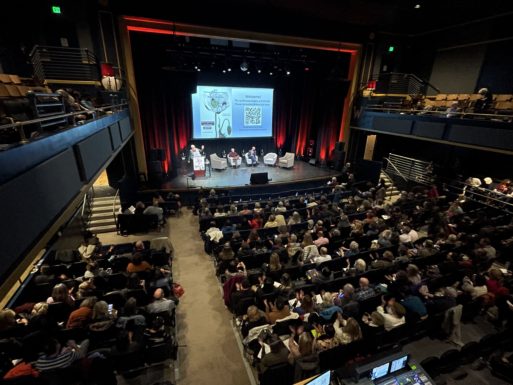
A National Clinicians Conference on Medical Aid in Dying was held at Revolution Hall in Portland, Oregon on February 17 and 18, 2023.
SevenPonds was present at The 2023 National Clinicians Conference on Medical Aid in Dying to provide our readers with an inside look at the changing medical landscape of this growing field. We learned about clinical aid-in-dying advancements alongside the 480 physicians, nurses, pharmacists, social workers, end of life doulas and volunteers, who attended the two-day event. The conference was only the second of its kind held in this country since 2020 after a three-year hiatus due to the Covid-19 pandemic.
The gathering was a culmination of their continued desire to better support the needs of 22% of the U.S. population in 10 states and Washington, D.C who have legal access to medical aid in dying, as well as address the concerns of those patients in states with pending or no legislation. There was also common interest expressed among attendees to expand access to medical aid in dying among varied populations throughout the country.
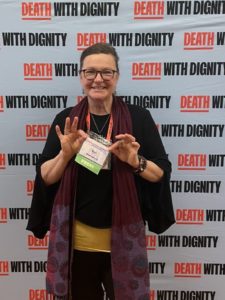
SevenPonds Associate Editor, Dana Watson, shares highlights from The 2023 National Clinicians Conference on Medical Aid in Dying with our readers.
Dr. Lonny Shalveson, conference co-chair and chair of the American Clinicians Academy on Medical Aid in Dying, commended the dedicated health professionals and warmly addressed the crowd: “I know that you are here because something about medical aid in dying has touched your hearts. You know that it is not just about writing a prescription for a lethal medication that you hand to patients so they can take it and die. You know it’s about end-of-life clinicians caring for patients who are considering aid in dying. You are here because you care. And you want to do this work conscientiously and superbly and well. We have designed this conference so you can do that.”
Highlights from the 2023 Conference on Medical Aid in Dying
Presentations were designed to address the pressing need for clinical discussions, explorations, and evidence-based knowledge about aid in dying. A focus on key clinical processes including prognostication, cognitive assessment, patient care, pharmacology, and ingestion methods offered insight into new means available to better facilitate medical aid in dying for patients. Current laws, language, legal pitfalls, and pending legislative updates were provided by law professor and bioethicist Dr. Thaddeus Pope. Other topics that closely examined ethical dilemmas and the influence of race, religion or culture upon patient choice or professional care honed in on the more personal aspects that can greatly influence this type of work.
The Need for Common Ground Among End-of-Life Care Providers
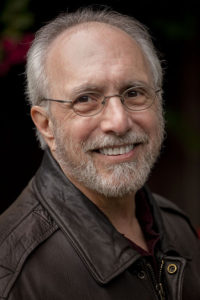
Conference co-chair, Dr. Lonny Shalveson, explains that phrases like “assisted suicide,” “dying with dignity,” or “voluntary euthanasia” do not fully impart the meaning of this work. He relayed to attendees that “medical aid in dying” best conveys the more complex process that defines a terminal patient’s right to die.
Overall, the majority of panel discussions spotlighted a commonly held desire to expand education on aid in dying to all end-of-life clinicians, who provide support to terminally ill patients. Currently, many hospice or palliative providers maintain neutral or hands-off approaches to medical aid in dying. Only a handful of providers throughout the country have policies in place that allow clinicians to discuss medical aid in dying with patients, while even fewer allow their physicians to prescribe the lethal medications.
However, terminally ill patients benefit from care from these organizations prior to ingesting medications to end their life, or at other times when their desire to do so does not ultimately occur for some unforeseen medical reason or change of mind. These medical aid in dying professionals hope their colleagues will make strides toward a better understanding and acceptance of the process to ensure seamless support for patients who may want to consider the option to end their lives.
Many who attended the conference are hospice and palliative professionals themselves. Dr. Lisa Stolarczyk is medical director for High Desert Hospice in New Mexico, a state recognized by conference presenters as having the most liberal medical aid in dying laws in the nation. Dr. Stolarczyk noted during the Hospices and Aid in Dying panel discussion, “Medical aid in dying is another way that people die. I hope hospice embraces these patients as they do all others.”
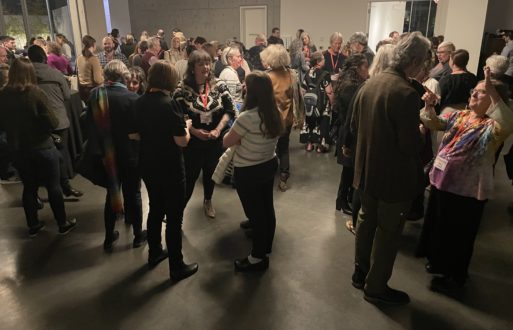
Clinicians gathered to network and share in camaraderie while attending the 2023 National Clinicians Conference on Medical Aid in Dying in Portland, Oregon.
Biggest Takeaway from the Conference
The bottom line is that clinicians simply want to honor those patients, who say, “I’m ready,” while ensuring others who are considering the option understand all of the end-of-life care alternatives available to ease their sufferings before choosing doing so.
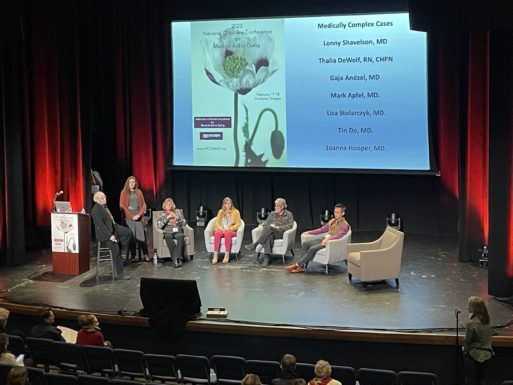
An attending clinician asks questions of the panel experts discussing medically complex cases at the 2023 National Clinicians Conference on Medical Aid in Dying.
They know that to provide the safest and most effective means to medical aid in dying for patients, every single patient must wholly grasp their prognosis and decline, truthfully acknowledge their fears and concerns, and fully recognize the options available to them otherwise. Because once a patient chooses to self-administer lethal medications to end their life, there is no turning back.
Knowing that caring trailblazers in this field are doing all they can to help their patients to understand and carefully weigh all options is commendable. Because only then can they truly assist patients to choose how they wish to die and to do so as comfortably and peacefully as humanly possible. It is what this conference was all about for them.
Advancing Clinician and Community Education
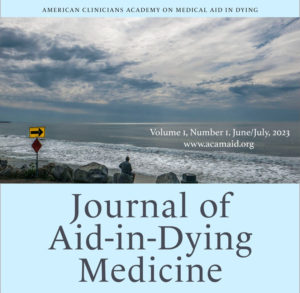
A new resource on medical aid in dying was announced during the conference to bolster patient, family, and medical professional education.
The inaugural volume of “Journal of Aid-in-Dying Medicine” is a free quarterly peer-reviewed resource that is expected to be available online this summer.
Future issues will highlight submissions from doctors to doulas, who will share investigations, case histories, stories, photos, poems and more.

 SevenPonds Attends the 2023 National Clinicians Conference on Medical Aid in Dying
SevenPonds Attends the 2023 National Clinicians Conference on Medical Aid in Dying


 Recovering Cremation Remains After the Los Angeles Fires
Recovering Cremation Remains After the Los Angeles Fires
 “As Tears Go By” by Marianne Faithfull
“As Tears Go By” by Marianne Faithfull
 “The Sea” by John Banville
“The Sea” by John Banville














